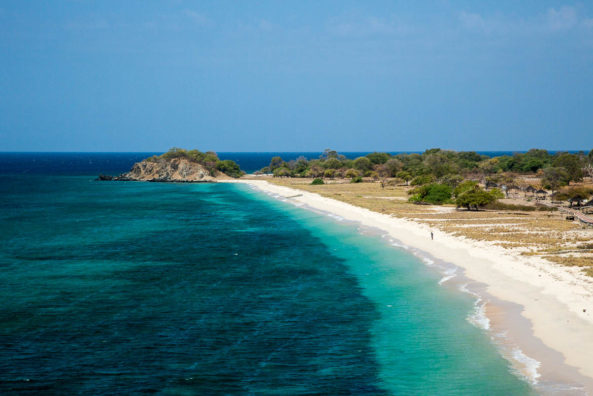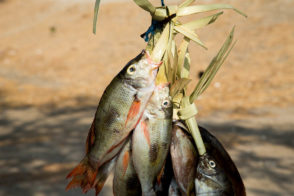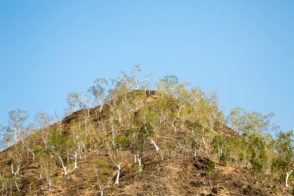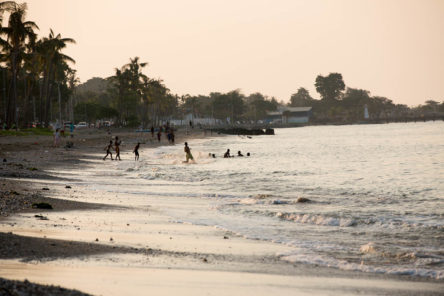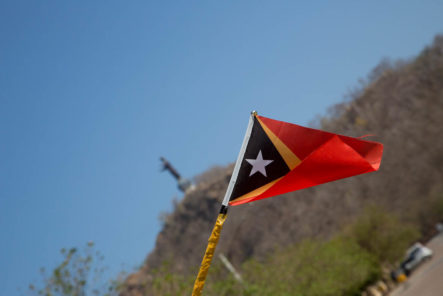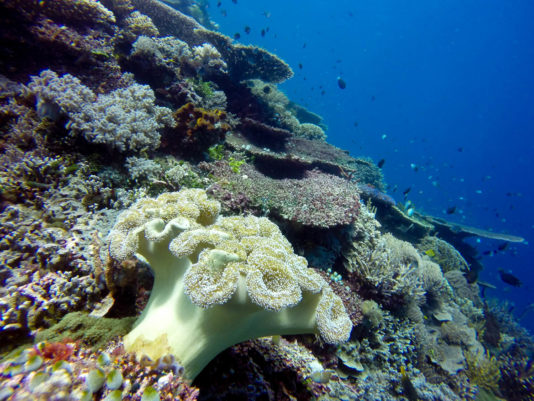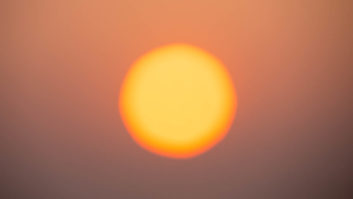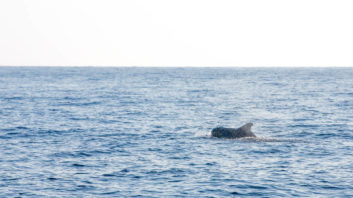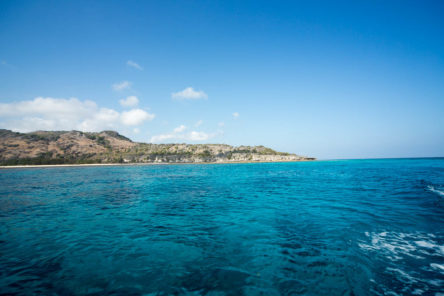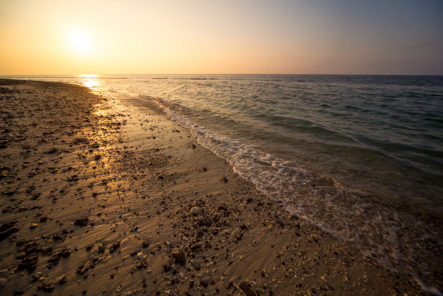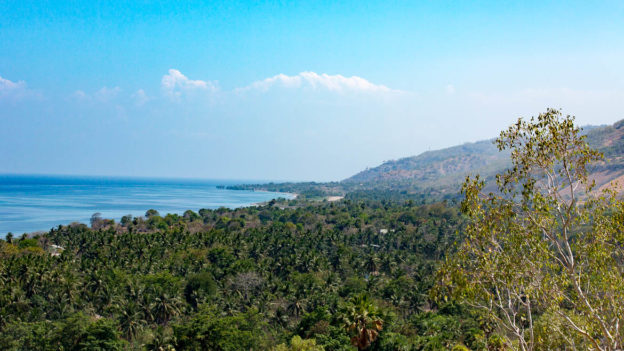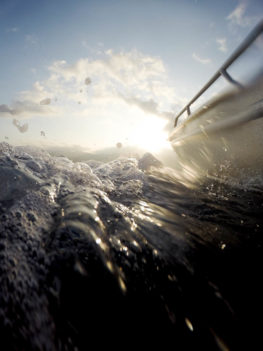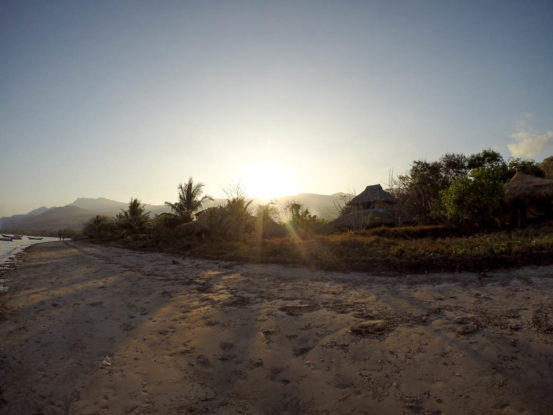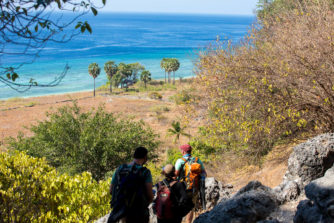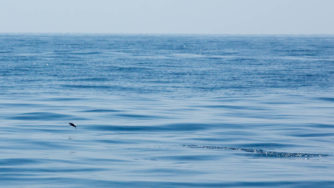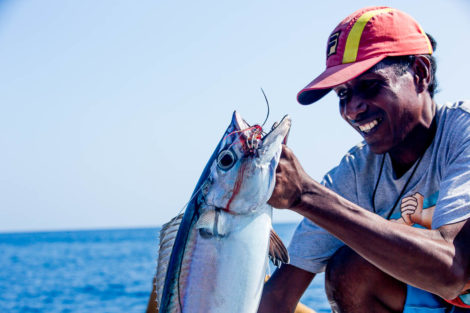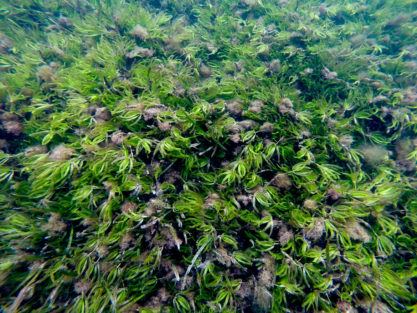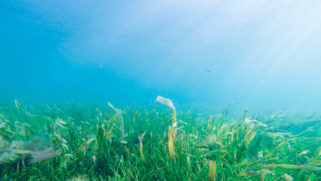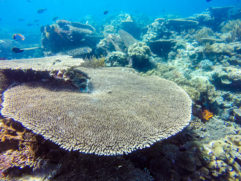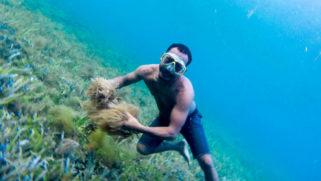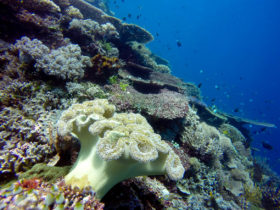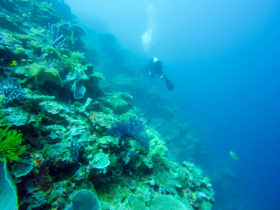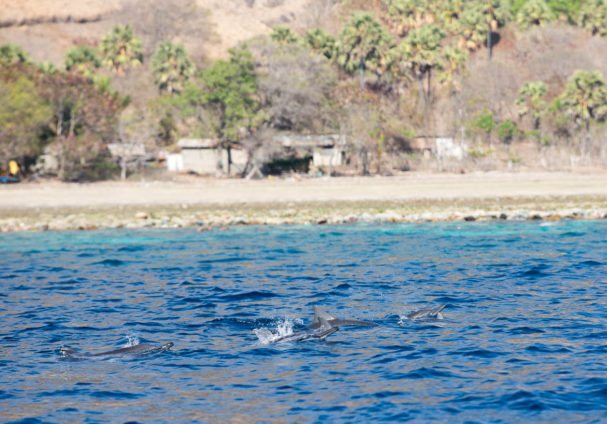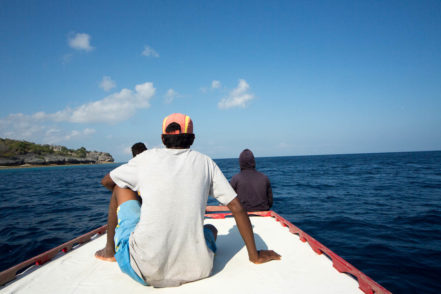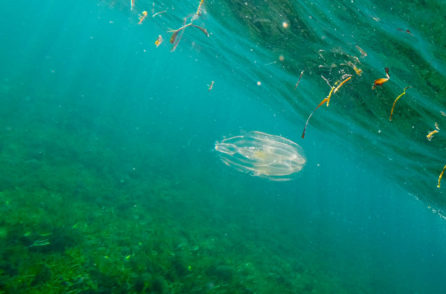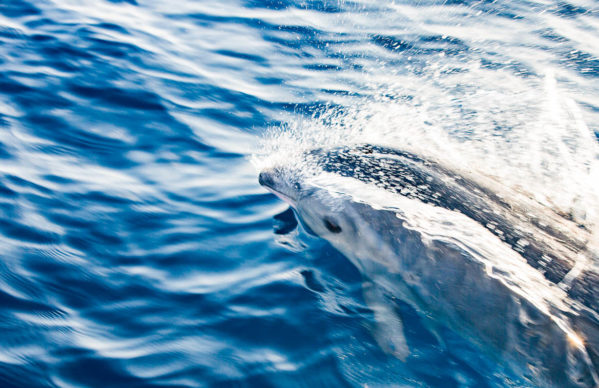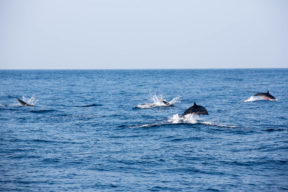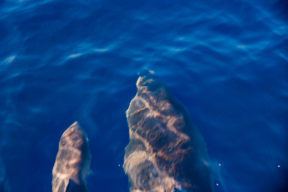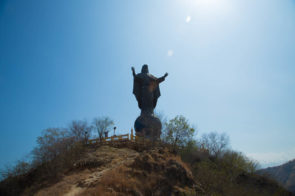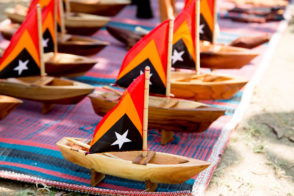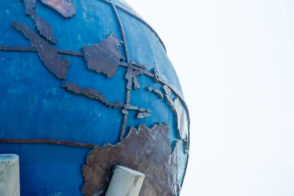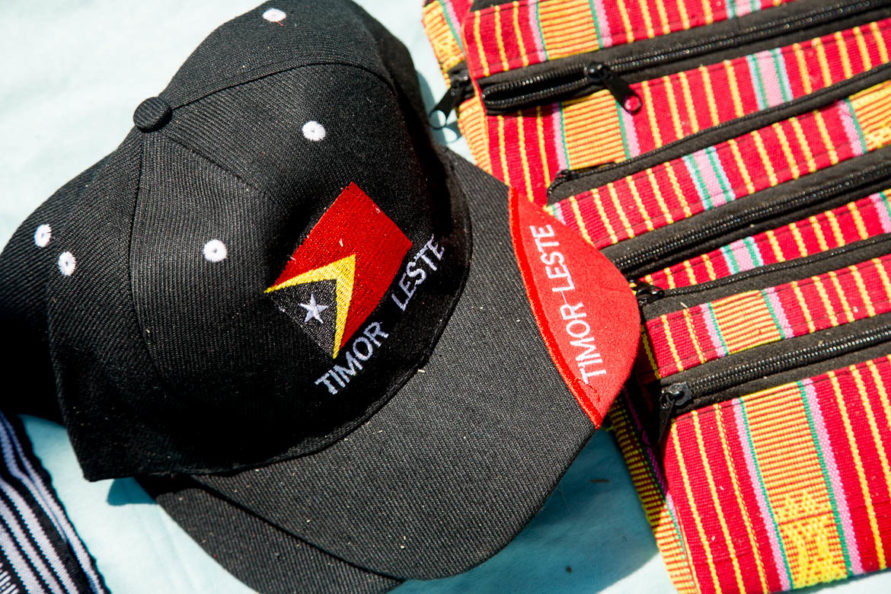As the plane loops down towards Timor-Leste’s capital city Dili, I’m surprised by how dry and brown this tropical island appears. “We’re at the height of the dry season” our new Country Coordinator, Greg, tells me as he shoves my backpack and camera gear into his car at the airport. “In a month the rains will come, the hills will be green again, and it’s a totally different place. At the moment everyone is getting cranky as the heat is building without respite.” It’s certainly a far cry from the cold, wet and rainy Manchester I left 36 hours before.
I’m in Timor-Leste to collect images and video of our new base and to help get Greg up to speed with all things Blue Ventures. He’s only been in his new role for 2 weeks and is already up to his ears in organising the impressive list of logistics required to get a new expedition base up and running. From beginning discussions and scoping locations for our new base site and offices, to ordering a research boat and dive equipment for planned marine surveys he has it all in progress and I’m excited to lend a hand. We’re also going to take the opportunity of my visit to meet with representatives from the various government ministries and project partners we’ll be working with as things progress here to introduce our plans and build key relationships.
Lying between its giant neighbours Australia and Indonesia, and bathed by the deep waters of the Banda and Timor seas, Timor-Leste sits at the heart of the Coral Triangle; an ocean region home to the highest diversity of marine life on earth with 76% of the world’s coral species, 6 of the world’s 7 marine turtle species, and at least 2,228 reef fish species described to date. The island’s spectacular marine diversity and productivity has given the Timorese people a longstanding relationship with the ocean, with archaeological evidence dating back at least 42,000 years suggesting that Timor-Leste may be the crucible of humanity’s tradition of fishing at sea.
 This is an extremely exciting new project for Blue Ventures, using our award winning expedition tourism model to drive grassroots marine conservation action in this incredible biodiversity hotspot. We’re initially here as a component of the GEF Dugong and Seagrass Conservation Project: “Enhancing the conservation effectiveness of seagrass ecosystem supporting globally significant populations of dugongs across the indian and pacific ocean basins.” As well as contributing data to habitat monitoring with partner organisations including Conservation International, we’re leading on a specific programme goal to incentivise community engagement in dugong and seagrass conservation in Timor-Leste through volunteer ecotourism.
This is an extremely exciting new project for Blue Ventures, using our award winning expedition tourism model to drive grassroots marine conservation action in this incredible biodiversity hotspot. We’re initially here as a component of the GEF Dugong and Seagrass Conservation Project: “Enhancing the conservation effectiveness of seagrass ecosystem supporting globally significant populations of dugongs across the indian and pacific ocean basins.” As well as contributing data to habitat monitoring with partner organisations including Conservation International, we’re leading on a specific programme goal to incentivise community engagement in dugong and seagrass conservation in Timor-Leste through volunteer ecotourism.
After three days of meetings in the heat of Dili (including enjoying an impressive 6.3R earthquake during lunch at the Australian Embassy) it’s with huge anticipation that I’m up before dawn and down to the harbour to get the boat across the Wetar Strait to Atauro Island. I’ve been really looking forward to this part of my trip as Atauro will likely be the location that we’ll base our expeditions. I’ve read a lot about the island and I’m excited about diving beneath the water to explore one of the hidden highlights of the Coral Triangle. The Wetar Strait is also world famous as a whale and dolphin hotspot so I had my camera poised as we slid out across the glass smooth waters.
Unfortunately this wasn’t to be my lucky day for cetaceans, but as we chugged slowly across the water and Atauro slowly appeared out of the haze (Indonesia’s forest fires are causing some poor visibility even here) it was hard to feel anything but excitement. As we approached and followed the east coast of the island, Maria, a colleague from our local partner Empreza Di’ak, reeled off the names of the exotic sounding villages we were passing – Berau, Macelihu, Vila – as we discussed some of the challenges of working in these remote areas.
Over four days on Atauro we trekked overland from east to west coast, took a local longtail boat around the north end of the island (seeing spinner dolphins (Stenella longirostris) passing by just metres from the bow) and had many hours of talks with enthusiastic partners in the villages of Beloi, Adara and Uaro-ana amongst others. I also had the opportunity to enjoy diving the rich coral walls found just offshore and spent a few very enjoyable hours snorkelling above the seagrass bed off Beloi – no dugong sighting for me but there was a sighting by a local fisherman while we were on the island. The challenges facing local fishing communities in Atauro are similar to other areas where we work, but the overall the feeling of collaboration and potential for our volunteer programme to make an impact here is cause for great optimism.
The boat trip back to Dili didn’t disappoint this time with an incredible cetacean show with pods of Short-Finned Pilot Whale (Globicephala macrorhynchus) and Fraser’s Dolphins (Lagenodelphis hosei) making an appearance within minutes of each other. The dolphins even joined the boat for a few minutes bow-riding – including a mother and calf – magic!
Back in Dili another four days of meetings await as we gradually build our new base in Timor-Leste. Greg won’t be on his own for long as we start to build our team here, and more of our staff from other countries will be continuing to visit over the coming months as we get ready for our first expedition in March 2016. If you like the idea of spending weeks in paradise contributing to a world class conservation project you can find out more and get involved here. Take it from me, this is a truly extraordinary country, and you won’t regret it!
We would like to thank our partners for their interest and support from our funders including the GEF through UNEP under the Dugong and Seagrass Project and Wilstar.


